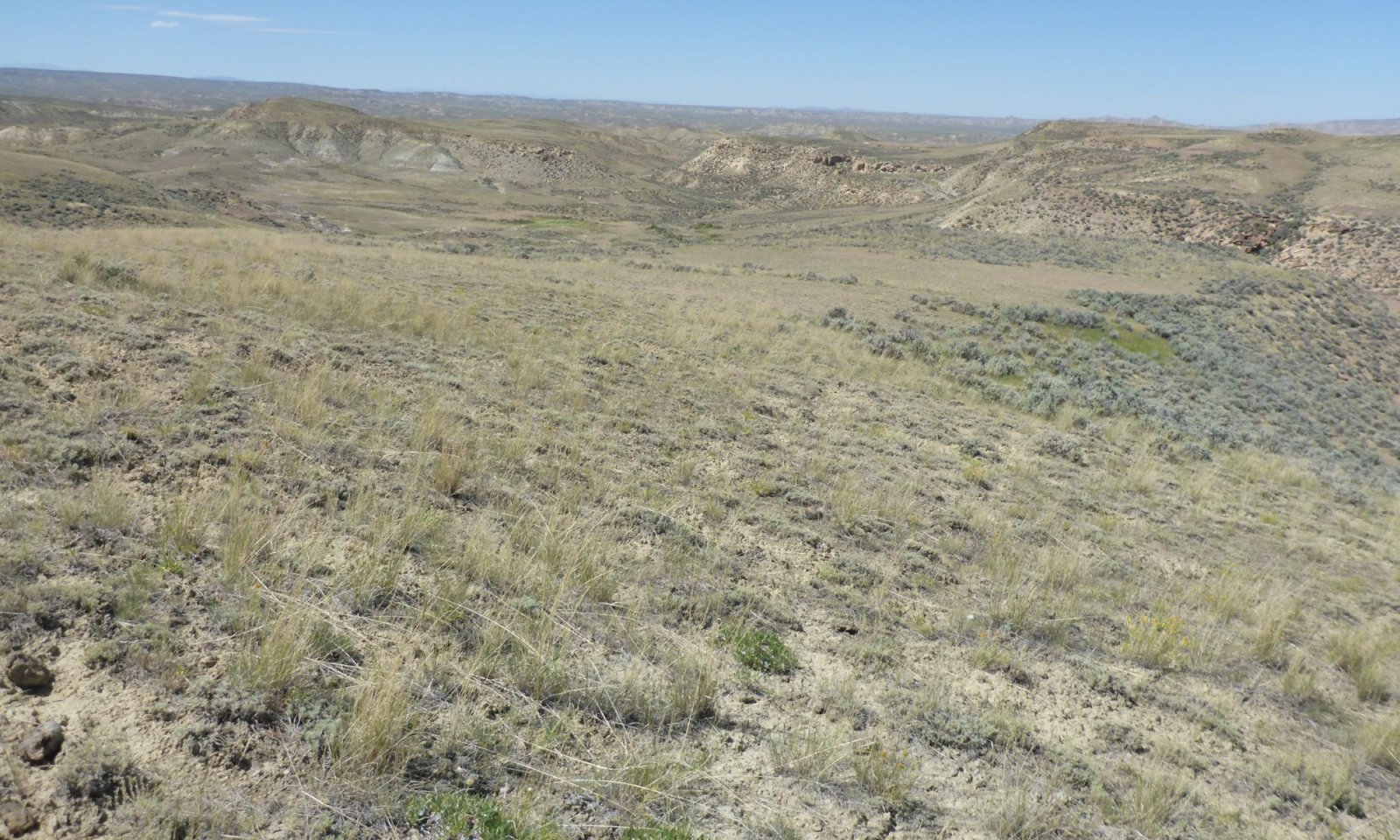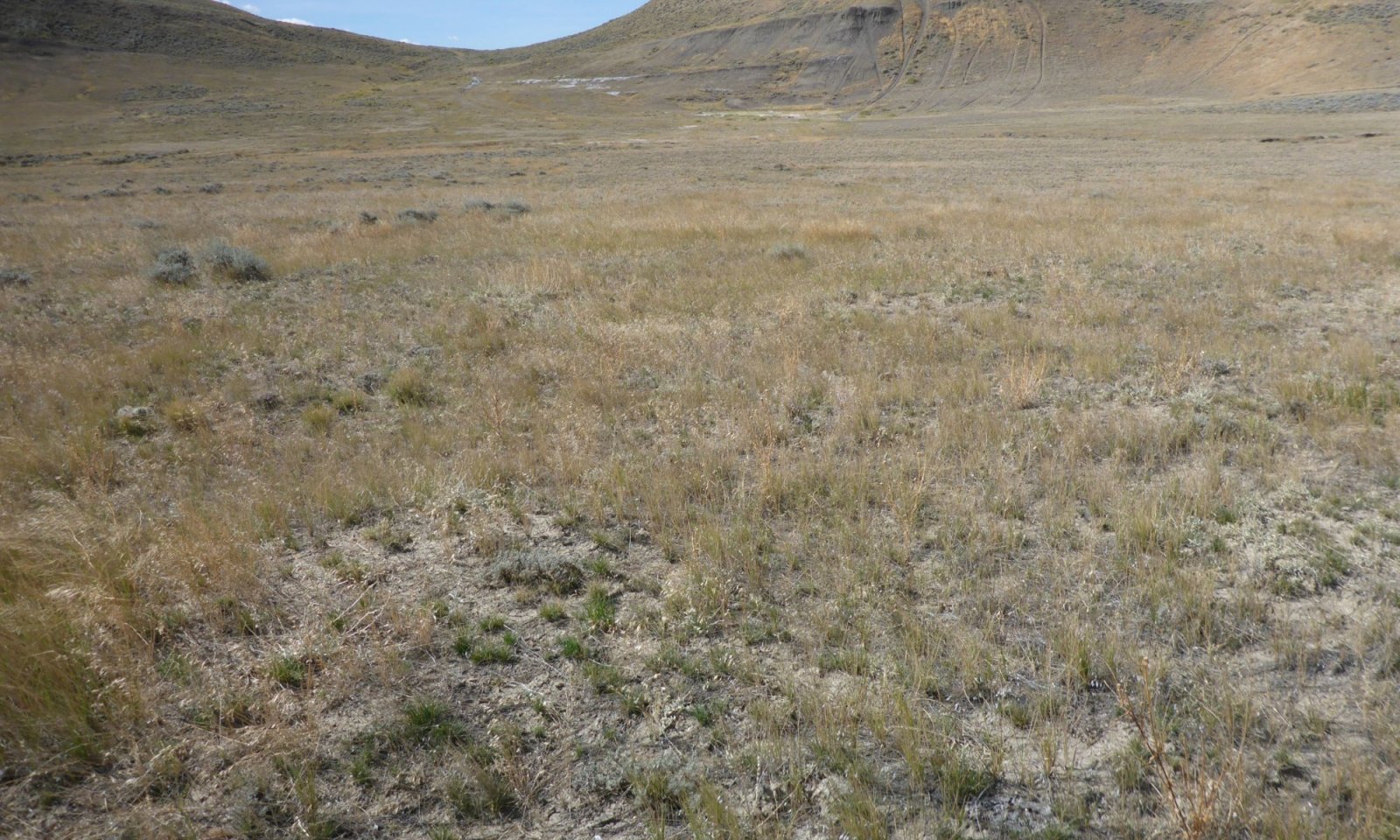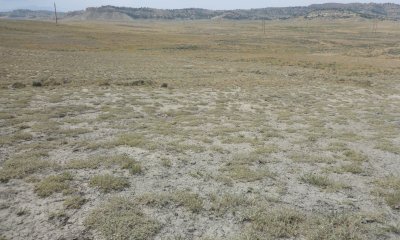
Saline Upland Clayey (SUC) Big Horn Basin Rim
Scenario model
Current ecosystem state
Select a state
Management practices/drivers
Select a transition or restoration pathway
-
Transition T1A
Use with no recovery removes or reduces the mid-stature cool-season grasses; which is further exacerbated with prolonged drought.
More details -
Transition T1B
Drought or disturbance with a seed source starts the conversion to the Invaded State.
More details -
Restoration pathway R2A
Long-term prescribed grazing with seeding will aid in the recovery of perennial grasses.
More details -
Transition T2A
Disturbance with a seed source for invasive species, especially with drought, starts the transition to an invaded State.
More details -
Transition T2B
Use of mechanical treatment and seeding aids in recovering disturbed sites.
More details -
Restoration pathway R3A
Integrated pest management or weed control and grazing management aid in the recovery to a Gardner's saltbush state.
More details -
Restoration pathway R3B
Intensive weed control with mechanical treatment and seeding, the community can be improved.
More details -
Transition T4A
Continued disturbance or lack of management with a seed source present will allow even a reclaimed site to transition back to the Invaded State.
More details -
No transition or restoration pathway between the selected states has been described
Target ecosystem state
Select a state
State 1
Saltbush/Native Grasses




Description
The Reference Communities (1.1., 1.2, and 1.3) for this state have developed under moderate use throughout the year by large ungulates. Although these sites do not provide a large quantity of forage, the value of the saltbush and the interspersed grasses provides a food source for spring and fall grazing when other sites are sensitive.
Characteristics and indicators
This State is characterized by a dominance of Gardner's saltbush and a mixture of mid-stature bunchgrasses and some rhizomatous species. A variety of low-growing forbs are present in these communities.
Resilience management
The Saltbush/Native Grasses State is easily shifted when disturbance occurs, but is well adapted to the climatic conditions. The Saltbush/Native Grasses State can quickly recover from drought, making it sustainable, but hard to reestablish once disturbed.
Submodel
Description
The loss of most of the perennial grass species within this state has created an at-risk community that is vulnerable to invasive species, but also is resilient and resistant to change. This creates a difficult scenario, and coupled with the low productivity of the land, many managers do not attempt to improve or manage these landscapes.
Characteristics and indicators
The Saltbush/Bare Ground State (State 2) consists predominately of Gardner's saltbush with pricklypear cactus or a few other scattered forbs, but very little other vegetation on the site.
Resilience management
As described before, the protein value of gardner’s saltbush provides an excellent source of feed at specific times of the year. If managed properly, saltbush can be a great spring or fall food source for livestock and wildlife.
Submodel
State 3
Invaded




Description
The major invasive species that are moving into the Big Horn Basin are cheatgrass, halogeton, Russian knapweed, and a variety of thistles.
Many of these sites are used frequently by recreationalists for ATV/ORVs, shooting, etc., due to the open, barren nature. The heavy clay soils are attractive for mudding and other 4-wheel drive activities. With the increased “traffic” and the soil surface disturbance, not only is the ground opened to allow establishment, but weed seed sources are readily transported from one area to another.
Characteristics and indicators
The Invaded State will maintain the Gardner's saltbush as well as birdfoot sagebrush, with varying composition of the native herbaceous species. The dominant or significant herbaceous composition will transition to an introduced or invasive species. Halogeton is the major threat to the Saline Upland Clayey ecological site. However, cheatgrass will establish in the barren interspaces.
Resilience management
Preliminary studies completed by the Wyoming Bureau of Land Management (BLM) and University of Wyoming have shown examples of halogeton outcompeting Gardner's saltbush to be the only species on a location. However, no final publication has been found detailing the final outcome. Presentations have suggested that Gardner's saltbush may still be present in the understory, and with the removal or suppression of halogeton, saltbush may be able to recover.
With other weedy species, no wide or monoculture stands have been located. The risk of going to a cheatgrass-only composition is minimal, unless intense ground disturbance (tillage, scraping, etc) occurs, removing the persistent saltbush cover. Once these communities have lost the native components, especially Gardner's saltbush, it is extremely difficult to reverse the community. Seeding is difficult due to the heavy-textured, salt-burdened, droughty soils.
Submodel
Description
Many of the sites identified have been near areas that are actively mined for bentonite, oil and gas, or have been used for recreational vehicles. The level and extent of disturbance varies greatly between each of these uses. Climate, degree of disturbance, type of disturbance, and the resources surrounding each location must be considered with this state.
Characteristics and indicators
The Altered State is to capture areas where surface disturbance has removed the native vegetation or where the site has been treated to improve or enhance the native community resulting in a non-native composition.
Resilience management
Climatic conditions and soil limitations restrict the feasibility of manipulating the native vegetation or degraded sites with much success. Additional inputs to help improve soil quality as well as artificial watering systems to assist in seedling establishment have been costly, and troublesome. Irrigating these sites has created issues with surface crusting, inhibiting seedling emergence. Intensity and timing of precipitation has proved risky and nearly impossible to achieve a high level of success. However, some areas have had acceptable establishment with introduced or improved varieties of species.
Submodel
Mechanism
Frequent, severe grazing and drought–When these communities are used year-long with no recovery and multiple uses per growing season, the mid-stature cool-season grasses will be removed or reduced to a very trace composition on the site. If it is again exacerbated with prolonged drought, the community will become a saltbush-dominant or monoculture stand.
Constraints to recovery
The lack of seed source and the harsh environment created by the heavy clay soils limits the ability for seedling establishment.
Mechanism
Drought, disturbance or overuse with seed source present–When drought or a disturbance such as overuse by grazers occurs, the vulnerability of the state is opened and when there is a seed source present, invasive species can gain a foothold quickly due to the open canopy and low plant density.
Constraints to recovery
The difficulty to eradicate invasive species hinders the ability for the recovery of this State.
Mechanism
Long-term prescribed grazing; seeding with no to only minimal ground disturbance, cultural seeding practices–With extended grazing management, allowing rest and rotation, these sites may be prevented from further degradation, and will see a return to the Reference State composition over very extended periods. Trials have been completed on an informal basis of broadcast seeding sites in the fall and winter, and then feeding hay over them. This works to incorporate organics that will increase infiltration, provide nutrients to the site as well as prevent erosion, and allow for a small amount of establishment of species. Although the scientific studies have not addressed this in the Basin, it has been seen to have a small success in isolated areas.
Relevant conservation practices
| Practice | External resources |
|---|---|
|
Range Planting |
|
|
Upland Wildlife Habitat Management |
|
|
Prescribed Grazing |
Mechanism
Disturbance with seed source present, drought–Ground disturbance from recreation, energy development, or other activities provides a means to introduce a seed source into an already vulnerable community with the high bare ground and open canopy. Drought provides further stress on the saltbush, reducing vigor, and allowing species such as halogeton and cheatgrass to gain a foothold in the community.
Constraints to recovery
The difficulty to eradicate weeds limits the recovery potential of this community.
Mechanism
Mechanical grazing land treatment (furrowing or pitting), seeding–Several locations throughout the Big Horn Basin have been contour furrowed with a range plow with a 5-foot interval. In some areas non-native seedings were implemented while others had no seedings completed. The furrows assisted in catching and holding more moisture and provided a zone where establishment could take place. Overall improvements were seen to persist on these treated locations for over 20 years; however, the process is quite expensive with low returns (long-term species response).
Constraints to recovery
The limitations of the soil for seedling establishment is the major constraint to recovery. With the use of newer seeding techniques and soil amendments with salt-affected, heavy textured soils, better success rates are being seen.
Relevant conservation practices
| Practice | External resources |
|---|---|
|
Critical Area Planting |
|
|
Grazing Land Mechanical Treatment |
|
|
Range Planting |
Mechanism
Integrated pest management, invasive weed control, long-term prescribed grazing - As was mentioned previously, it is known that with favorable weather and management, Gardner’s saltbush will respond and gain productivity, if a presence is there before treatments begin. The process is very slow and requires continual maintenance of the site to prevent halogeton from returning.
Context dependence
If cheatgrass is the invasive species of concern, then recovery is not a potential, but halogeton is containable to allow recovery of this State.
Relevant conservation practices
| Practice | External resources |
|---|---|
|
Integrated Pest Management (IPM) |
|
|
Upland Wildlife Habitat Management |
|
|
Prescribed Grazing |
|
|
Invasive Plant Species Control |
Mechanism
Integrated pest management or invasive species control, grazing land mechanical treatment, seeding–With the improved varieties of plant materials that are available for salt-affected soils, seeding sites has become a more feasible solution. However, control of the invasive species with long-term grazing management as well as mechanical preparation and seeding will be required to have any level of success. Success will still be minimal due to the limiting climatic conditions that exist within the Big Horn Basin.
Relevant conservation practices
| Practice | External resources |
|---|---|
|
Critical Area Planting |
|
|
Grazing Land Mechanical Treatment |
|
|
Range Planting |
|
|
Heavy Use Area Protection |
|
|
Integrated Pest Management (IPM) |
|
|
Upland Wildlife Habitat Management |
|
|
Early Successional Habitat Development/Management |
|
|
Native Plant Community Restoration and Management |
|
|
Prescribed Grazing |
|
|
Invasive Plant Species Control |
Mechanism
Continued disturbance or lack of use or management with seed source present –If a site is vulnerable and not established or if it is in a degraded state, many times these sites will be repeatedly misused or abused by vehicle traffic. These at-risk sites are vulnerable to weeds especially the aggressive invasive species that are within the Basin. Knapweed and halogeton, as well as cheatgrass have seed sources readily available and easily transported on tires, undercarriages, animals, and humans themselves.
Model keys
Briefcase
Add ecological sites and Major Land Resource Areas to your briefcase by clicking on the briefcase (![]() ) icon wherever it occurs. Drag and drop items to reorder. Cookies are used to store briefcase items between browsing sessions. Because of this, the number of items that can be added to your briefcase is limited, and briefcase items added on one device and browser cannot be accessed from another device or browser. Users who do not wish to place cookies on their devices should not use the briefcase tool. Briefcase cookies serve no other purpose than described here and are deleted whenever browsing history is cleared.
) icon wherever it occurs. Drag and drop items to reorder. Cookies are used to store briefcase items between browsing sessions. Because of this, the number of items that can be added to your briefcase is limited, and briefcase items added on one device and browser cannot be accessed from another device or browser. Users who do not wish to place cookies on their devices should not use the briefcase tool. Briefcase cookies serve no other purpose than described here and are deleted whenever browsing history is cleared.
Ecological sites
Major Land Resource Areas
The Ecosystem Dynamics Interpretive Tool is an information system framework developed by the USDA-ARS Jornada Experimental Range, USDA Natural Resources Conservation Service, and New Mexico State University.



